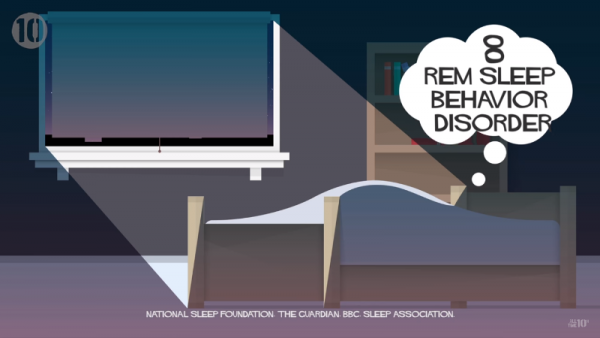By KM Diaz, | May 31, 2017

Those who have REM sleep disorder tend to act out their dreams through shouting, talking, or hitting. (YouTube)
A new research has found that sleep behavior disorders, particularly REM sleep disorder, could be an early warning of Parkinson's disease and other neurological conditions.
All humans, including birds and other mammals, experience rapid eye movement (REM) sleep. During this period, eyes are moving in a random, quick motion. On normal REM sleep, brain's nerve pathways stop a person to move, leading to temporary paralysis.
Like Us on Facebook
However, the nerve pathways of people with REM sleep behavior disorder are not active, causing a person to physically act out the dream. The most common symptoms of REM disorder includes jumping, arm flailing, shouting, emotional outcries, laughing, and recalling the dream when the person woke up during the episode.
Now, in the new study, people with REM disorder have 80 percent of chance of developing Parkinson's disease and other neurological conditions.
Brainstem has been known to control dreams during REM sleep. However, a researcher from the University of Toronto, Dr. John Peever, thinks that " REM-active neurons" are responsible for dreaming. Peever together with his colleagues utilized these cells in rodents to control their dreaming process, in which it causes rapid change into REM sleep.
Because of the discovery, Peever explores other dreaming dysfunctions in humans. The team linked REM sleep disorder to common brain disorders.
The study found that 80 percent of people with REM disorder could develop synucleinopathies like Lewy bodies dementia and Parkinson's disease. The research also suggests that such sleep disorders may be an early warning for neurological conditions that will appear within the next 15 years.
The research was presented in 2017 Canadian Neuroscience Meeting, and Peever hopes that the study could be used as a tool for the future development to preserve the functions of neurons and their structures.
-
Use of Coronavirus Pandemic Drones Raises Privacy Concerns: Drones Spread Fear, Local Officials Say

-
Coronavirus Hampers The Delivery Of Lockheed Martin F-35 Stealth Fighters For 2020

-
Instagram Speeds Up Plans to Add Account Memorialization Feature Due to COVID-19 Deaths

-
NASA: Perseverance Plans to Bring 'Mars Rock' to Earth in 2031

-
600 Dead And 3,000 In The Hospital as Iranians Believed Drinking High-Concentrations of Alcohol Can Cure The Coronavirus

-
600 Dead And 3,000 In The Hospital as Iranians Believed Drinking High-Concentrations of Alcohol Can Cure The Coronavirus

-
COVID-19: Doctors, Nurses Use Virtual Reality to Learn New Skills in Treating Coronavirus Patients










